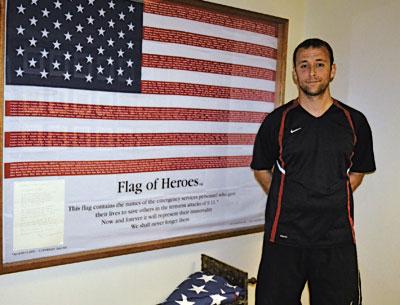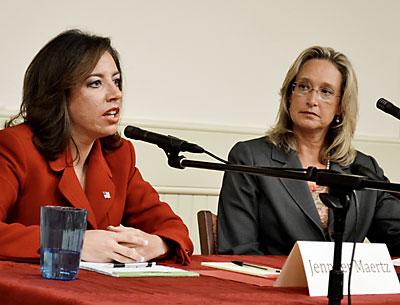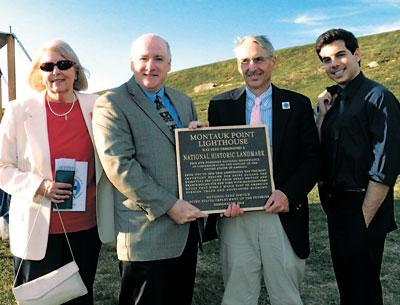A V.F.W.’s Fresh Face, Very Fresh
A V.F.W.’s Fresh Face, Very Fresh

“I wouldn’t be talking to you right now,” Lance Cpl. Roger King, the newest commander of the Veterans of Foreign Wars Post 982 in Sag Harbor, said last Thursday, referring to how quiet he was in high school. Chosen in an election in July, Mr. King is the youngest to have served as the post’s commander, and possibly the youngest in the state.
Calling himself the nerdy type at Pierson, where he was primarily interested in computers, he graduated in 2003. Born in Sag Harbor and raised by parents who were both deaf, he felt different from other kids, which posed a challenge but at the same time gave him “a deeper human understanding,” he said. His experience with his parents’ disability also helped him when he served in Iraq, he said, because he was able to communicate with Iraqis through body language.
Lance Corporal King served in the Marine Corps from March 2005 through March 2009, after he decided that small-town living was not leading him in the right direction, a decision that made him “10 times a better person,” he said.
A military occupation specialist, he served two combat tours in Iraq, the first taking him to a forward operating base, and the second to Camp Fallujah with an infantry unit.
“A few friends died,” he said — three, to be exact. The soft-spoken commander modestly reported that he was awarded a Purple Heart after being shot in the head. He had his helmet on at the time, and three days later was ready “to get back . . . put my life on the line to make sure my friends came home.”
Lance Corporal King did not re-enlist because of post-traumatic stress disorder symptoms, such as irritability, nightmares, and sensitivity to noises.
Even training could cause great stress, he said — for example when he was told to lie on the ground to simulate being killed in action. He said that when he left the Marines, the military helped him make the transition to civilian life with therapy and health benefits. In addition to the Purple Heart, he received the Iraqi Campaign Medal with a star (for two deployments) and Good Conduct Medals in three consecutive years.
“I loved it, every second,” he said of his service.
The suggestion to take on the post’s leadership position came from its previous commander, Harry (Haps) Wils, who served 10 consecutive terms, 15 in all. Lance Corporal King agreed, in the hope that he could change the stereotype of V.F.W. members being only older men. He said he wants to attract, support, and honor all of the men and women in and around Sag Harbor who are active members of the military as well as those who have served defending the country in the past.
Responsibilities of the post commander include appointing committees and officers, approving spending, recruiting, attending district meetings and training sessions, and reporting to national V.F.W. offices. Officers at each post are trained to help other veterans with their various needs, including medical treatment.
Lance Corporal King joined the Sag Harbor Fire Department two years ago and works a day job at Blue Sky Window Cleaning. He attends Suffolk Community College, where he needs six more credits to graduate. His goal is to teach history at the high school level. He has “always had a love” for the subject, he said.
With no building of its own, the post uses the American Legion hall on Bay Street for its meetings, which are held on the third Monday of each month. The V.F.W. welcomes others to help provide services to local veterans, in the form of scholarships, care packages to those deployed overseas, and support when they return. Recently, for example, the post gave an injured veteran a gift certificate for groceries. The organization also offers a “feeling of belonging, companionship, and brotherhood” to those who have served, he said.
The Fire Department also gives him that feeling, which is helpful to life after the military. He boarded a department bus last Thursday for a trip to the Suffolk County Fire Academy in Yaphank for training.
Lance Corporal King hopes that the community will support the post on its 50th anniversary by buying tickets to its 50-50 raffle. Tickets will be available under a tent on Long Wharf during HarborFest this weekend. Members will be on hand to answer questions veterans may have, and to welcome those who wish to join.




